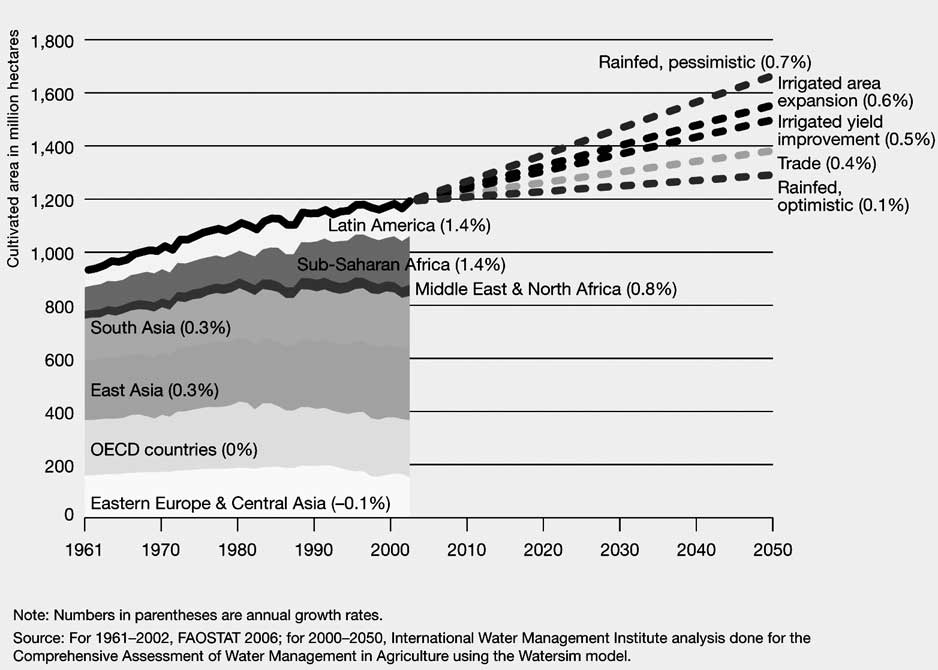
| Previous | Return to table of contents | Search Reports | Next |
| « Back to weltagrarbericht.de | ||
Context, Conceptual Framework and Sustainability Indicators | 25

Figure 1-11. Scenarios of land requirements by regions from 2000 to 2050.
|
50 years, with implications for rainfall and the frequency and intensity of extreme weather events (Stern, 2006). The outcomes of this change will vary heavily by region. Cropclimate models predict an increase in crop production in slight to medium warming scenarios of less than 3°C (Parry et al., 2007). Livestock production is one of the major contributors to climate change within agriculture (Steinfeld et al., 2006).
Figure 1-12. Number of people in 1995 without access to an improved water source, MDG goal and projection to 2015. Source: Rosegrant et al., 2006. |
1.2.5 Direct and indirect drivers Direct drivers of change Changes in human well-being, as characterized by the development and sustainability goals of the IAASTD, come about as the result of a multitude of factors at a variety of scales. For example, change for a particular household may occur as the direct effect of a better harvest due to use of an improved technology. The improved technology itself may have been developed as a result of investment in agricultural research, science and technology and its adoption may have been facilitated by changes in prices or improvements in education and market infrastructure. Effective policy measures depend on a careful distinction between direct and indirect drivers of change. Following the framework, direct drivers of change include food demand and consumption patterns, land use change, the availability and management of natural resources, climate and climate change, energy and labor, as well as the development and use of AKST. Relevant natural resources include land resources-i.e., soil, water, flora and fauna-and climate. Growing demand for food, feed, fiber and fuel drives the pace of changes in land use. These changes may include clearing or planting of forests, drainage of wetlands, shifts between pasture and cropland, and conversion to urban uses. Climate change has the potential to change patterns of temperature and precipitation as well as the distribution of pests and diseases. Other natural, physical, and biological drivers include evolution, earthquakes, and epidemics, the use of labor, energy, inputs such as chemical fertilizers, pesticides, and irrigation, and the use of new plant and animal species or varieties. Finally, direct drivers include AKST development and use, includ- |
| Previous | Return to table of contents | Search Reports | Next |
| « Back to weltagrarbericht.de | ||